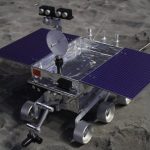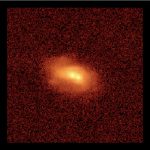Aging Voyager 1 spacecraft undermines idea that dark matter is tiny black holes0
- From Around the Web, Space
- January 11, 2019
Humanity’s most far-flung spacecraft, NASA’s 41-year-old Voyager 1, has poked a hole in a long-shot theory of dark matter.

Humanity’s most far-flung spacecraft, NASA’s 41-year-old Voyager 1, has poked a hole in a long-shot theory of dark matter.

Wants a key senator to listen to stories from service members who claim sightings

Do you remember learning about protons, neutrons, and electrons in grade school? Your teacher probably never told you what shape electrons are, and there’s a good reason: No one knew for sure! At least, we didn’t know until recently, when a scientific study showed us the shape of electrons.

Astronomers have fresh insight on a mysterious source of recurring radio pulses from space.

CLASSIFIED KGB documents reveal shocking findings inside Egypt’s Great Pyramid.

Tess mission has detected three new planets and six supernovae in its first three months

When the dinosaur-killing asteroid collided with Earth more than 65 million years ago, it did not go gently into that good night. Rather, it blasted a nearly mile-high tsunami through the Gulf of Mexico that caused chaos throughout the world’s oceans, new research finds.

Astronomers have revealed details of mysterious signals emanating from a distant galaxy, picked up by a telescope in Canada.

Chang’e 4 will test soil composition, try to grow plants, and listen for traces of Big Bang

Galaxy mergers—in which two galaxies join together over billions of years in sometimes-dramatic bursts of light—aren’t always easy for astronomers to spot. Now, scientists from the University of Colorado Boulder have developed a new technique for finding these cosmic couplings in surveys of the night sky.